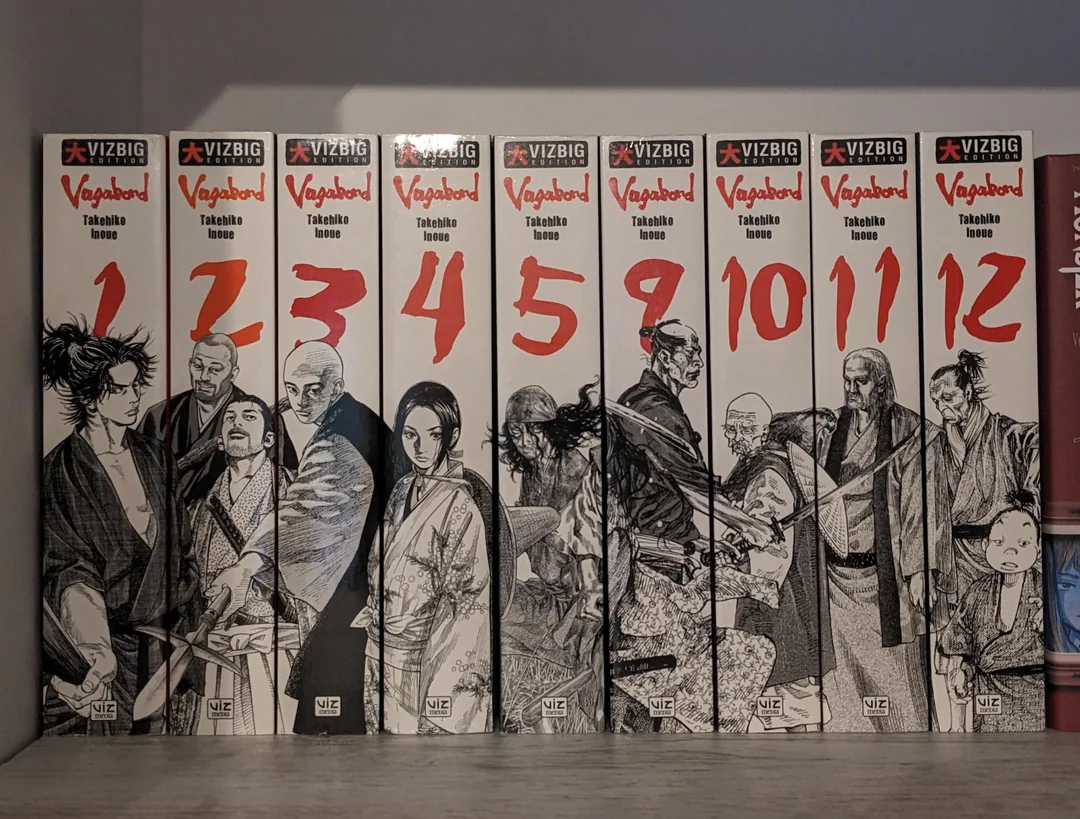Vagabond is more than just a manga series—it’s a deeply philosophical and artistic exploration of the life of Musashi Miyamoto, one of Japan’s most revered swordsmen. Written and illustrated by the renowned Takehiko Inoue, Vagabond stands out for its breathtaking artwork, intricate character development, and profound exploration of themes such as self-discovery, honor, and the nature of strength. This manga has captivated readers around the globe, elevating itself as one of the most iconic works in the samurai genre.
The Story of Vagabond: A Journey of Self-Discovery
At its core, Vagabond is an adaptation of Eiji Yoshikawa’s novel Musashi, which chronicles the life of the legendary swordsman. The story follows the young Takezō Shinmen, who is later known as Musashi Miyamoto, as he embarks on a path to become the greatest swordsman in Japan. After surviving the Battle of Sekigahara, a defining moment in Japanese history, Takezō seeks to escape his brutal past by reinventing himself as Musashi, a man striving to master both the sword and his own inner turmoil.
The narrative isn’t just about sword fights and glory—it delves deep into Musashi’s internal struggles. From the start, the young man’s life is marked by violence and a desperate need for validation. However, his journey is about more than becoming a skilled warrior; it is about discovering the meaning of true strength and achieving enlightenment. Through each duel, battle, and encounter, Musashi confronts not only his opponents but also his own insecurities and fears.
The Art of Vagabond: A Visual Masterpiece
One of the most striking aspects of Vagabond is its art. Takehiko Inoue’s illustrations are nothing short of breathtaking. His attention to detail, particularly in the portrayal of Feudal Japan’s landscapes, brings the era to life, making the setting feel both expansive and intimate. The characters themselves are drawn with meticulous care, with each facial expression and movement conveying deep emotions. Inoue’s ability to capture the essence of his characters through visual storytelling is unparalleled.
The use of symbolism is another defining feature of Vagabond’s art. Nature, particularly the presence of water, mountains, and trees, often serves as a reflection of Musashi’s emotional state and growth. In moments of intense battles or introspection, the art shifts to match the tone, making the reader feel every ounce of the protagonist’s struggle. Inoue’s dynamic compositions during sword fights add a layer of intensity, capturing the fluidity and grace of the samurai combat style.
Inoue’s illustrations not only enhance the storytelling but also deepen the reader’s connection to the characters and their internal journeys. The interplay between art and narrative in Vagabond elevates it beyond the typical manga, turning it into an immersive, visual experience.
Key Characters of Vagabond: Warriors and Philosophers
At the heart of Vagabond is Musashi Miyamoto, a character whose evolution is both fascinating and complex. As a young man, he is driven by a thirst for power and recognition. However, as the story progresses, he realizes that true strength lies not in defeating others but in mastering oneself. His journey from a wild, angry youth to a disciplined, introspective swordsman is a powerful exploration of personal growth.
Sasaki Kojirō, Musashi’s destined rival, serves as a perfect counterbalance to Musashi’s character. While Musashi’s journey is marked by self-reflection and struggle, Kojirō’s path is one of innate skill and talent. Their rivalry is not just about who is the better swordsman—it is a philosophical clash between two different approaches to life and combat.
Other characters, such as Matahachi Honiden and Otsu, add depth to the story by reflecting Musashi’s internal conflicts. Matahachi, Musashi’s childhood friend, represents a path of weakness and cowardice, contrasting Musashi’s growth. Otsu, on the other hand, embodies love, loyalty, and emotional conflict, adding a personal dimension to Musashi’s journey.
Themes and Philosophical Underpinnings of Vagabond
The philosophical depth of Vagabond is one of its most captivating features. The samurai code, or Bushido, is explored in great detail, with Musashi constantly grappling with the concept of honor, life, and death. His evolution as a swordsman mirrors his understanding of Bushido, as he begins to view strength not just as physical prowess but as inner peace and mastery over one’s emotions.
One of the most profound themes in the manga is the duality of life and death. Musashi’s encounters with death—both his own and others’—force him to confront his fears and question the purpose of his journey. As the story unfolds, he realizes that true mastery of the sword requires an acceptance of death and the ability to transcend fear.
In addition, Vagabond explores the idea of enlightenment. Musashi’s path is not just about becoming the strongest swordsman, but about achieving a deeper understanding of himself and the world around him. His journey reflects a broader philosophical inquiry into the nature of existence, making Vagabond as much a spiritual journey as a physical one.
Conclusion
Vagabond is not just a samurai story—it is a deeply moving exploration of the human condition. Through the character of Musashi Miyamoto, Takehiko Inoue presents readers with a timeless tale of self-discovery, enlightenment, and the pursuit of greatness. The stunning artwork, complex characters, and philosophical themes make Vagabond a must-read for anyone interested in manga, samurai lore, or storytelling in general. Although the series remains unfinished, its impact on the manga industry and its readers is undeniable. Vagabond will continue to be regarded as one of the greatest manga masterpieces of all time

